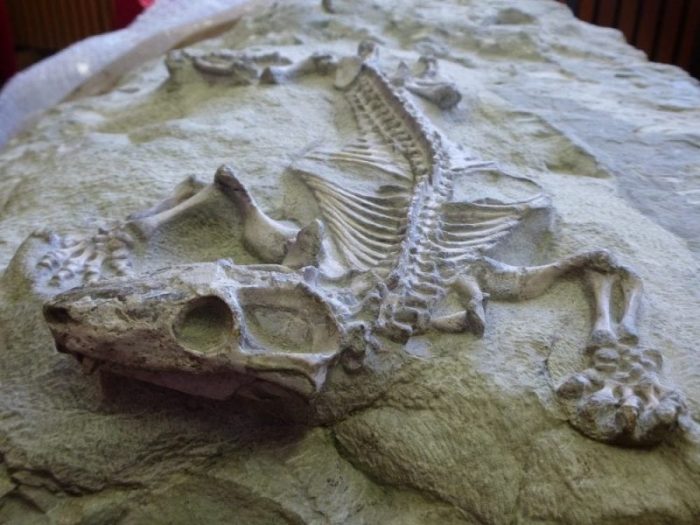
Imagine animals without an ossified braincase. Animals in which the brain is encapsulated by soft cartilage instead of hard bone. These animals did exist, and they belonged to the lineage that gave birth to mammals!
Mammals evolved from reptilian-looking ancestors some 250-200 million years ago. Mammalians ancestors of that time were sprawling animals, they likely did not have hair and they had a third eye on the top of their skull like some modern reptiles do. These ancestors are called the Cynodontia. Their fossils are plentiful in the badlands of the Karoo, a semi-desertic area in South Africa that has produced a great wealth of fossils, thousands of beautifully preserved and articulated skeletons of mammal-like reptiles throughout the last two centuries.
A complete understanding of cynodonts anatomy is critical to trace the evolutionary origin of the mammalian lineage. For many years, it has been believed that cynodonts had an unossified, cartilaginous braincase like many modern reptiles do today. In contrast, mammals have a completely ossified braincase thanks to the presence of a bone called the orbitosphenoid. How the ancestors of mammals evolved this bone out of nothing was a mystery. Using modern X-ray micro-CT imagery and digital 3D reconstruction, our team at the University of the Witwatersrand (Johannesburg, South Africa) has been able to find a small and very delicate orbitosphenoid in Cynododontia, which solves the paradox of the origin of an ossified braincase.

Fossil of a Galesaurus, a dicynodont closely related to Thrinaxodon (Credit: Iziko Museum of Natural History)
Our research shows that the oldest cynodonts from the Permian (260 to 250Ma) had a partially ossified orbitosphenoid. Then, this orbitosphenoid was nearly completely lost in early Triassic (250 to 230Ma) species. Only a handful of specimens of that period preserves a minute, very delicate lamina of spongious bone that represents the orbitosphenoid. It is sometimes found “floating” in anatomical position, which shows that the bone was embedded in a soft, cartilaginous braincase.
The reason why cynodonts evolved a soft braincase is unknown, however, it is possible that a solid braincase evolved in mammalian ancestors to serve as an anchor point for masticatory muscles. This is supported by the fact that an extensively ossified orbitosphenoid evolved in parallel with dental occlusion (and thus mastication) multiple times among cynodonts, as shown by our work. Another group of mammal-like reptiles, the dinocephalians, evolved a completely ossified braincase in an independent manner as they became adapted to head-butting fights.
Our work demonstrably shows that the orbitosphenoid did not evolve out of anything, but that a relictual structure was co-opted to form the larger, completely ossified mammalian orbitosphenoid. Yet another example that evolution does not create new structures, but recycles pieces of the anatomy to adapt to new functions.
The study, The mystery of a missing bone: revealing the orbitosphenoid in basal Epicynodontia (Cynodontia, Therapsida) through computed tomography was recently published in the journal Naturwissenschaften.









